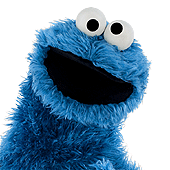Did you even know that the videos I was talking about existed?I was too old to watch the videos, but as a child in the early 70’s, I had a ton of Richard Scarry BOOKS.
-
 Welcome to the Muppet Central Forum!
Welcome to the Muppet Central Forum!
You are viewing our forum as a guest. Join our free community to post topics and start private conversations. Please contact us if you need help. -
.jpg) Christmas Music
Christmas Music
Our 25th annual Christmas Music Merrython is underway on Muppet Central Radio. Listen to the best Muppet Christmas music of all-time through December 25. -
 Macy's Thanksgiving Parade
Macy's Thanksgiving Parade
Let us know your thoughts on the Sesame Street appearance at the annual Macy's Parade. -
 Sesame Street debuts on Netflix
Sesame Street debuts on Netflix
Sesame Street Season 56 has premiered on Netflix and PBS. Let us know your thoughts on the anticipated season. -
 Back to the Rock Season 2
Back to the Rock Season 2
Fraggle Rock Back to the Rock Season 2 has premiered on AppleTV+. Watch the anticipated new season and let us know your thoughts. -
 Sam and Friends Book
Sam and Friends Book
Read our review of the long-awaited book, "Sam and Friends - The Story of Jim Henson's First Television Show" by Muppet Historian Craig Shemin. -
 Jim Henson Idea Man
Jim Henson Idea Man
Remember the life. Honor the legacy. Inspire your soul. The new Jim Henson documentary "Idea Man" is now streaming exclusively on Disney+. -
 Bear arrives on Disney+
Bear arrives on Disney+
The beloved series has been off the air for the past 15 years. Now all four seasons are finally available for a whole new generation.
Why is the Richard Scarry's Best Videos Ever series out of print?
- Thread starter salemfan
- Start date

 While enjoyable, nothing else really special about them.
While enjoyable, nothing else really special about them.